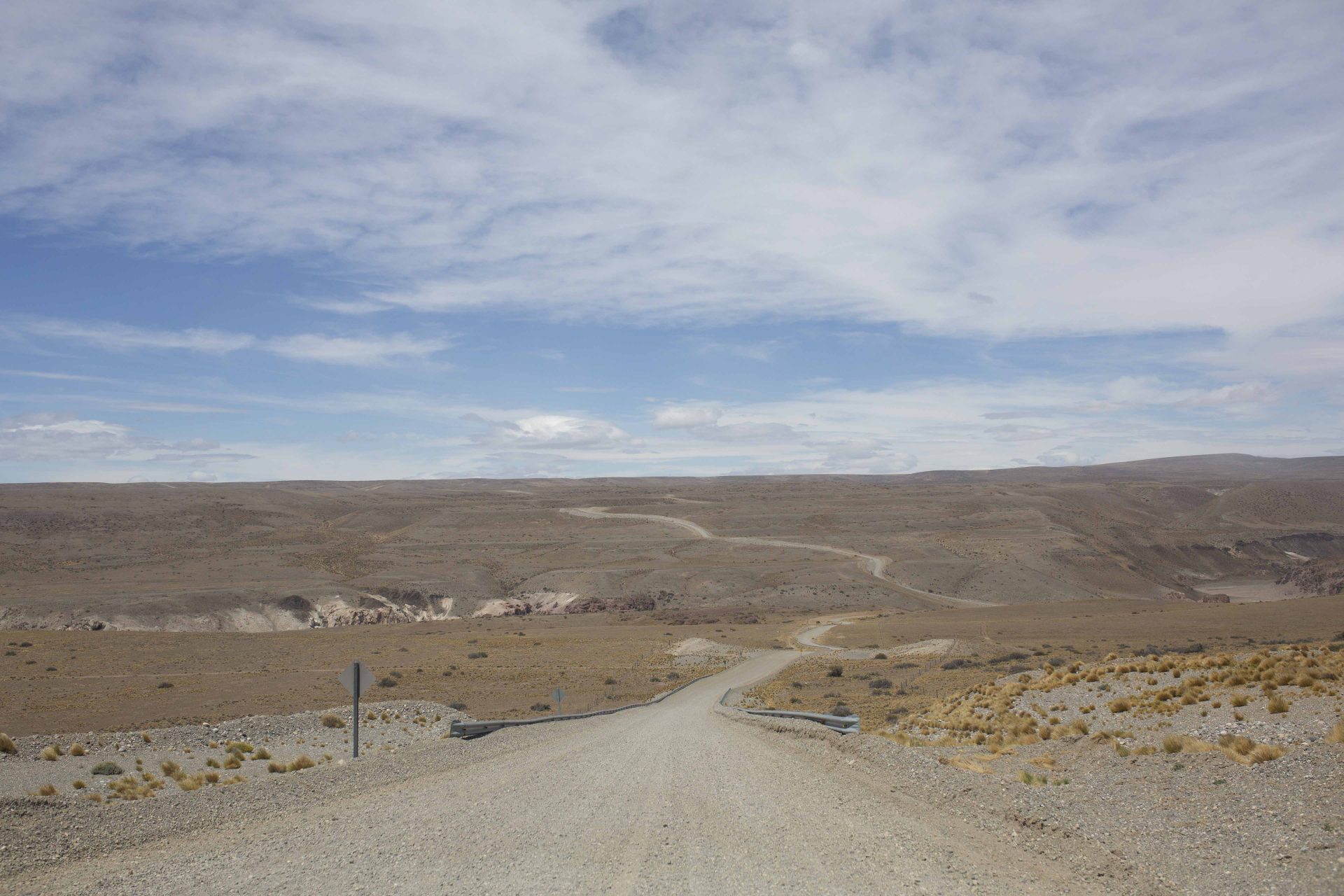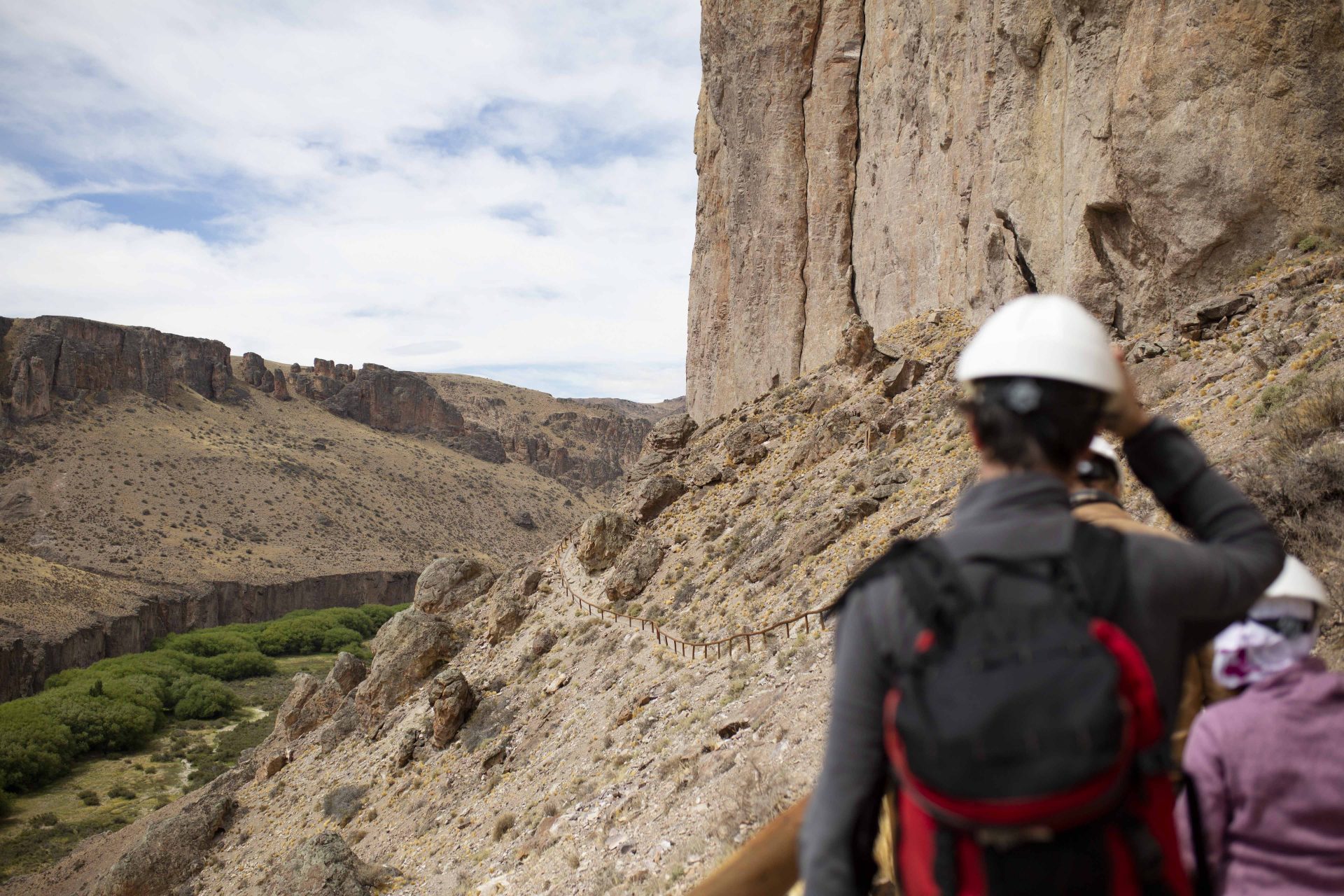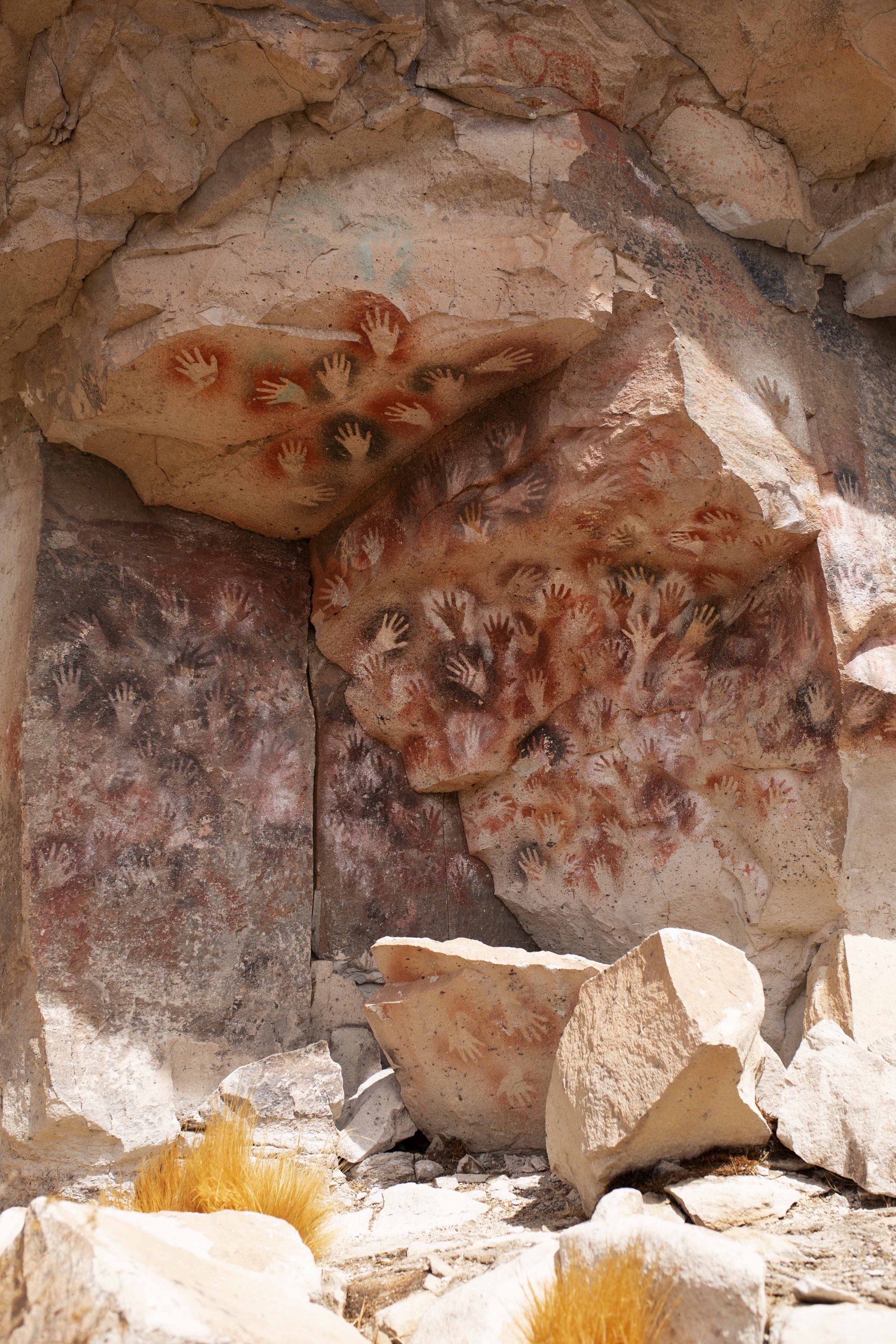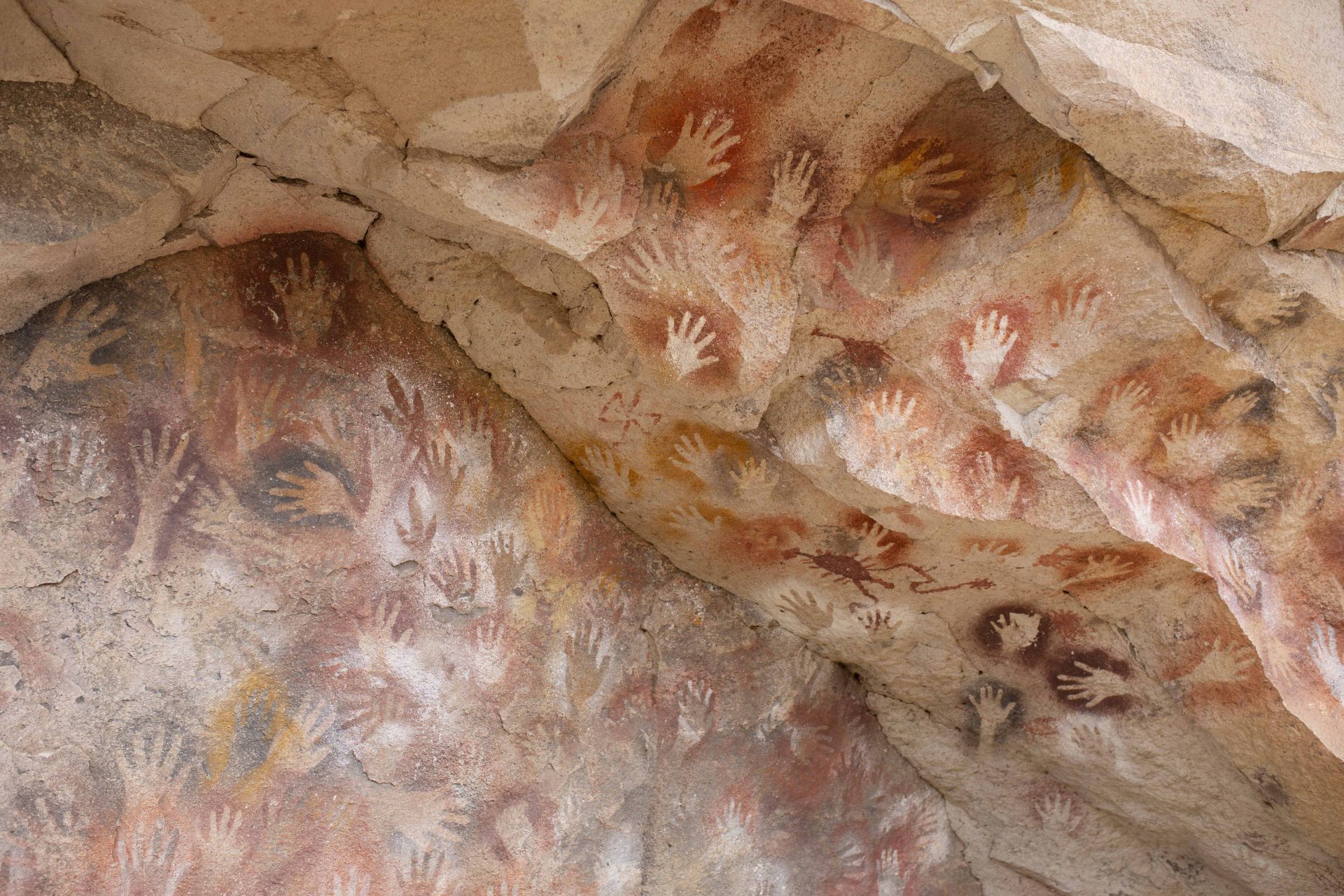
In the vast desert of Patagonia, where the endless Route 40 continues straight through the windy and dry landscape, there is a wonder to visit if you get off the road. Located in the province of Santa Cruz, “Cueva de las Manos” is famous for the paintings of hands and guanacos (in the llama family) dated back to 13 000 to 9500 years ago. The caves are found in a deep canyon with steep 200 meter high rock formation. At the very bottom there is a running river making the grass green.
The rock art is declared as a UNESCO World Heritage Site, and considered to be “one of the most important sites of the earliest hunter-gather groups in South America during the Early Holocene.” The art consists of the many, many human hands, as well as hunting scenes and rheas (big flightless bird). It was made by some of the earliest human societies in South America, the first Patagonian hunters’ who lived as nomads in small groups. So little are known about their culture that they by some are called “The people of the Río Pinturas” or river “Ecker”, and they are possibly ancestors of the Tehuelche people. The guanacos they hunted, are to be seen in big groups in the area some 10 000 years later.
Because there is low humidity in the area, with stable rock formations and no water running inside the caves, the paintings are conserved in excellent conditions. The artworks are painted with natural pigments in red, purple, yellow, black and white.
You can either book a tour from the closest village Perito Moreno (not the glacier with the same name located further south) or go by car on your own. Be sure to have filled the tank and have some spare wheels in case flat tire problems. You need to drive some 2300 km to get to “Cueva de las Manos” from Buenos Aires.
-Hilda-



